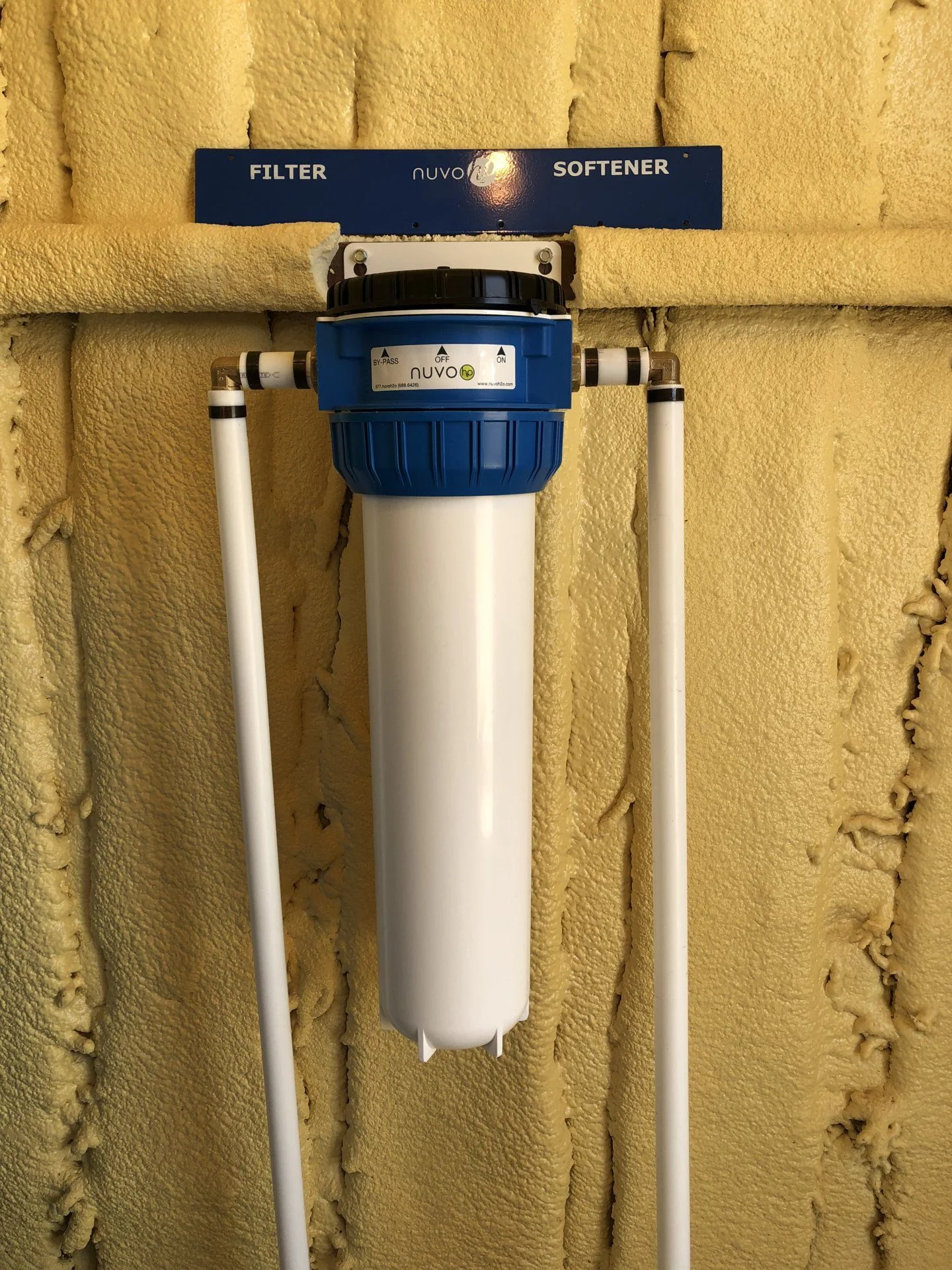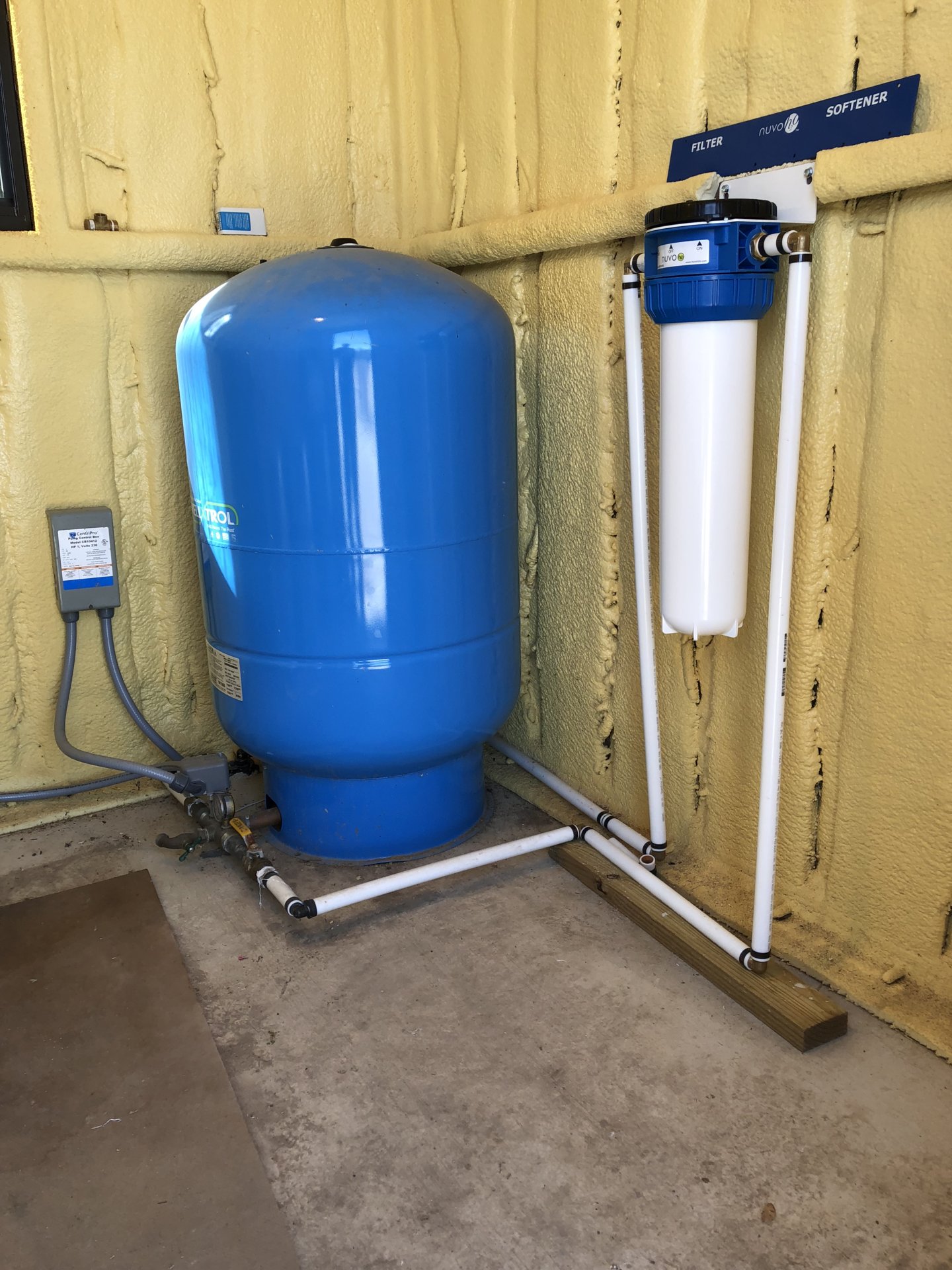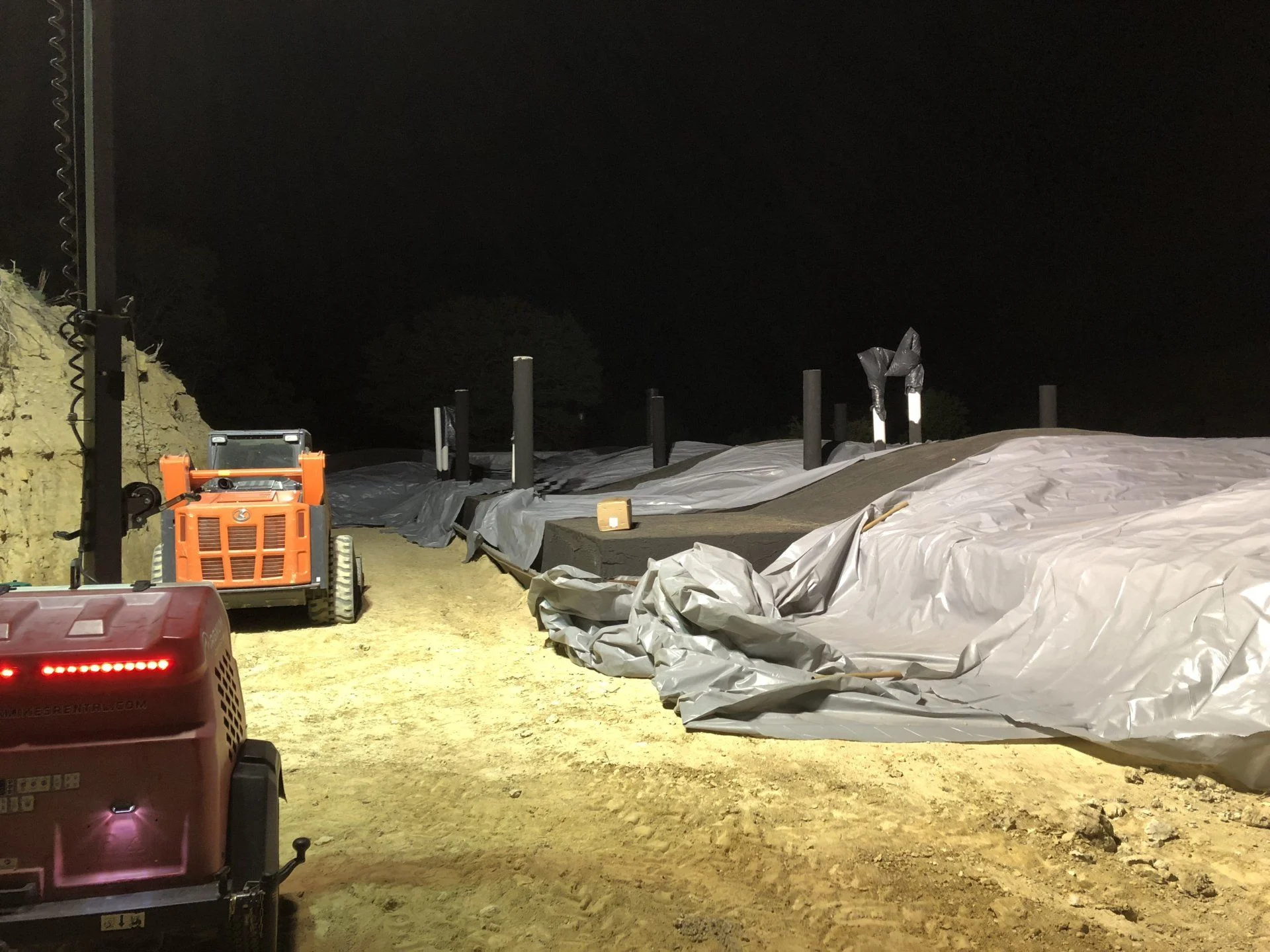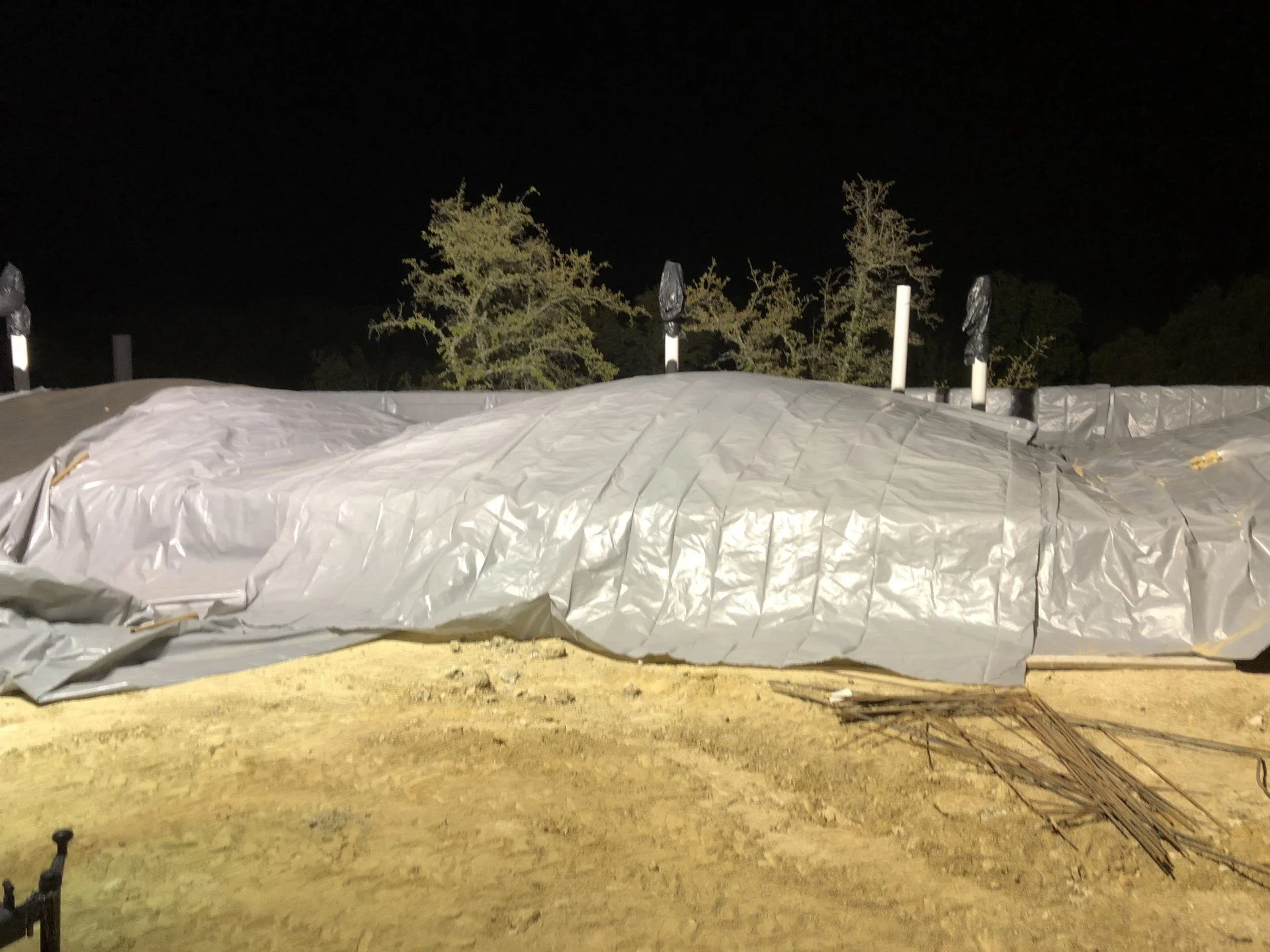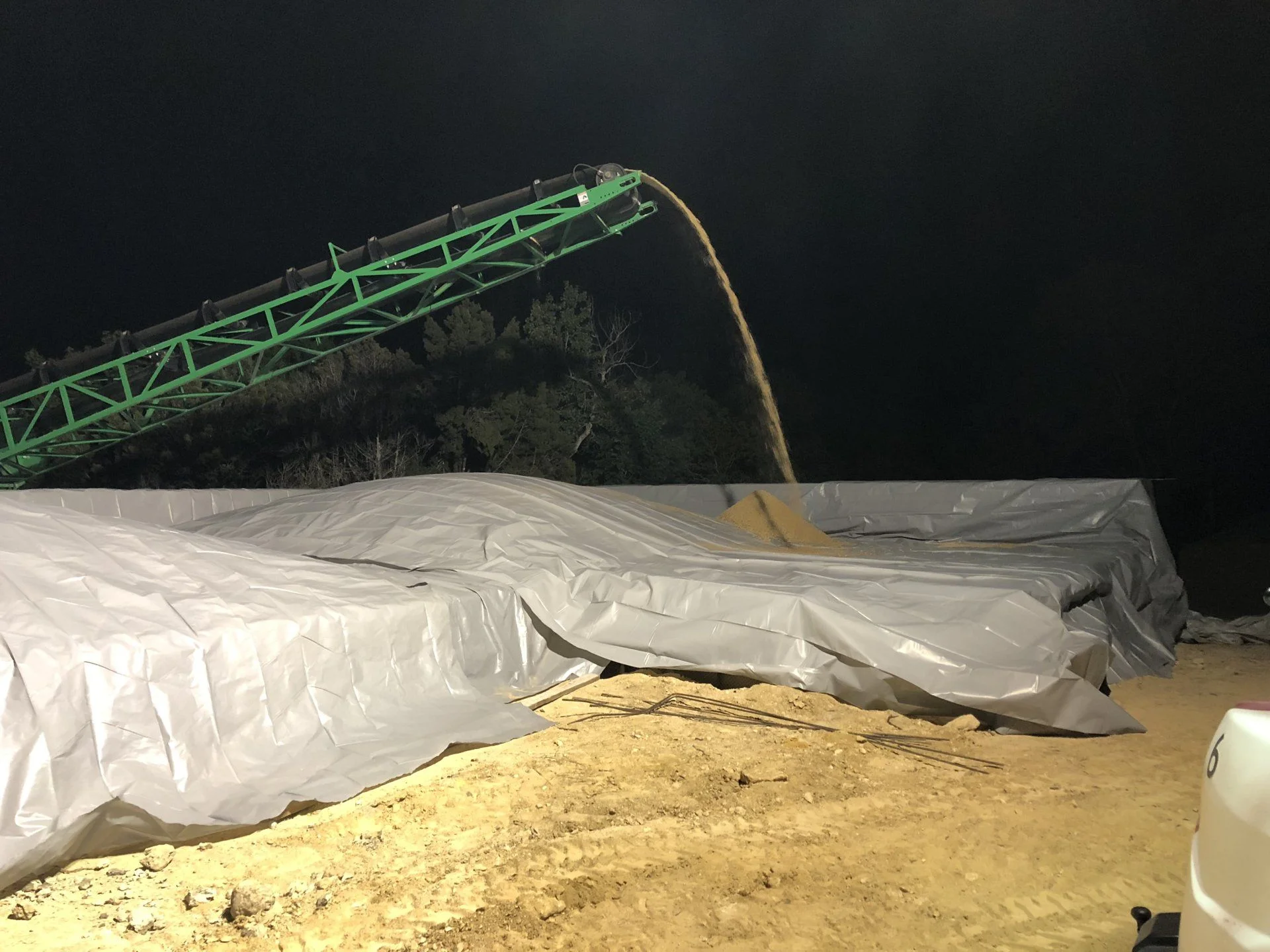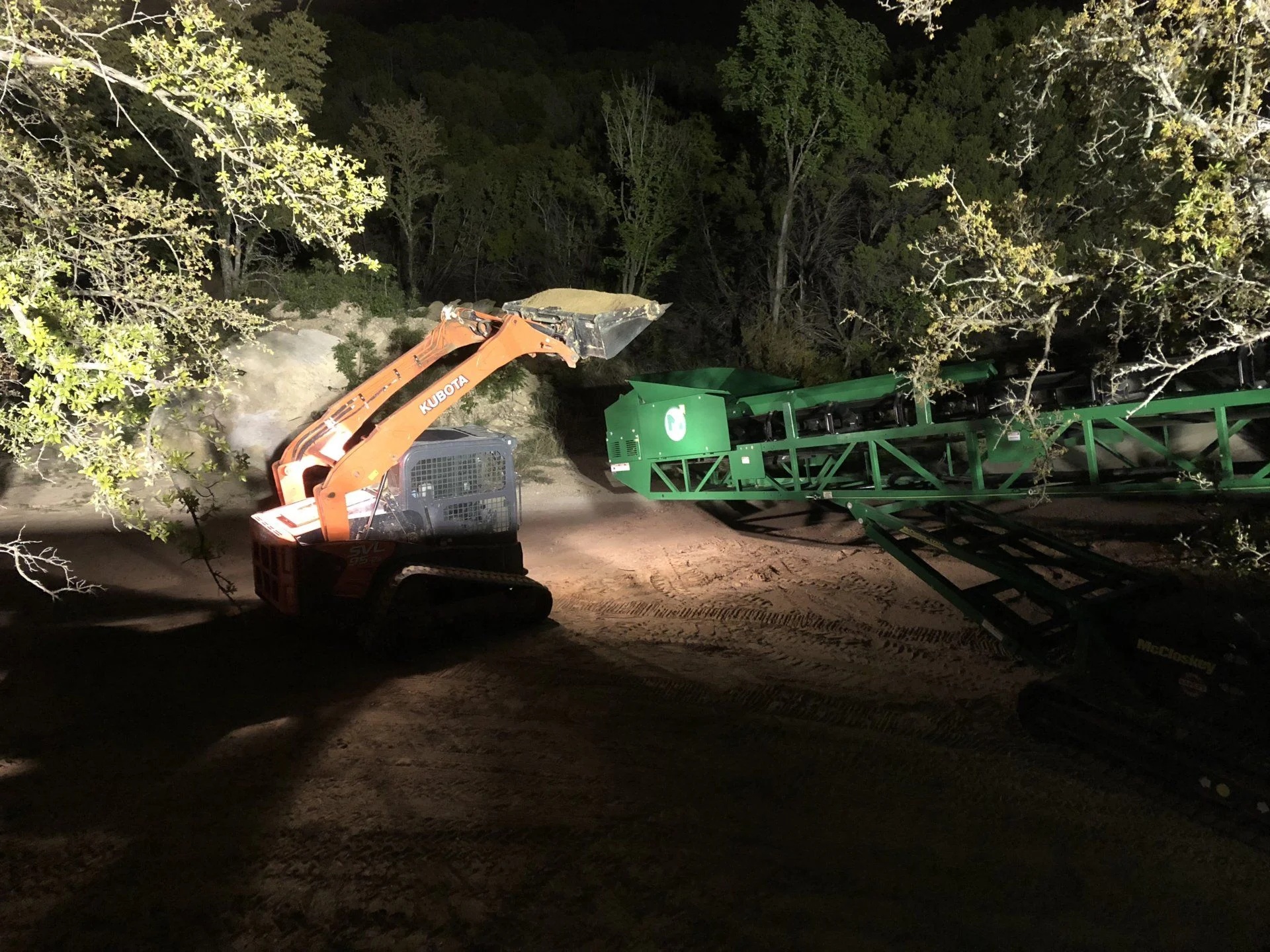Here is something that I did last week, that may be of interest to anyone with a water well (or who's city water is very hard). I knew from having lived for a long time with a water well only four miles from here, that our water would be pretty hard. So I paid to have it thoroughly tested by a large commercial lab. In some ways, it was good news - very low iron content for example, and it's perfectly healthy water. But it is quite hard, at 376 mg/L (22 grains). We knew it was, from the film on dishes in the dishwasher and etc. We've been using and drinking it as is for the 11 months we've been living here and it doesn't particularly bother us, but it is hard on appliances, dishes, and clothes.
We didn't want a conventional salt softener; I've lived with those before and didn't like them, so I did some research on other kinds of softeners and decided to try a chelating softener. These work by chemically binding the calcium and magnesium ions so that they can't precipitate out of the water as sulfates, bicarbonates, or chlorides and wreak havoc on your plumbing and appliances. Instead of having to back-flush and replace the salt as in a salt system, you just replace a large filter once every 6 months or so (the filter is good for 50,000 gallons). After reading a lot of reviews and recommendation, we decided to go with the Nuvo system.
NuvoH2O Systems We bought the largest one they have, because our one water well and pressure tank will serve both the new house and the shop apartment we are living in now.
Installation was pretty straightforward and I did it myself. All you have to do is identify which pipe comes into the pressure system from the well, and which goes out to the house(s). You install the filter in the "out" line of course. The water well driller ran 1" PEX line from the submersible pump in the well up to the pressure tank, and the plumber that plumbed the apartment used the same from the pressure tank to the apartment, so all I had to do was buy a couple of 10' lengths of 1" PEX from Lowes, some elbows and unions, and two 1" barbs with 1" NPT male threads to fit the filter housing.
I have done all kinds of home plumbing before, including sweat-soldering copper pipe, but using PEX is a whole 'nother world of easy and quick. This was my first time to work with it, but it won't be the last. You can cut it straight with a cheap and quick razor-blade cutter made for PEX. Then you piece it together, using copper band rings at every connection. The copper bands are cheap compared to other clamps, $20 for a bag of 50. You do have to have a special calibrated clamper/crimper to squeeze the bands. The commercial plumbing supply house I bought the bands at had the tool for $200; Lowes had one for only $100. I bought the cheaper Lowes one and it works fine; if I was a plumber and was doing this every day, the more expensive one would probably be worth it. One squeeze with the tool is all you need to make a water-tight connection every time. So fast! The tool gives good tactile feedback; you know when the clamping is done, without guesswork. I spent way more time measuring and fussing over doing it right than it actually took to plumb the thing in.
The filter housing itself needs to mounted sturdily to a wall, as it has to hold the weight of the filter full of water. I used a convenient metal brace/stud for the well house. A wall stud in a conventional house would also work.
Here is the installed system. The 86-gallon pressure tank in the second photo gives you an idea of the size of the filter:
We have only been using it for a few days, but we can already tell the difference in the dishes from the dishwasher. There might be a slight difference in taste, though I didn't mind the taste of the hard water so I might not be sensitive to it. I guess time will tell how well it really works, but we're happy for now.


